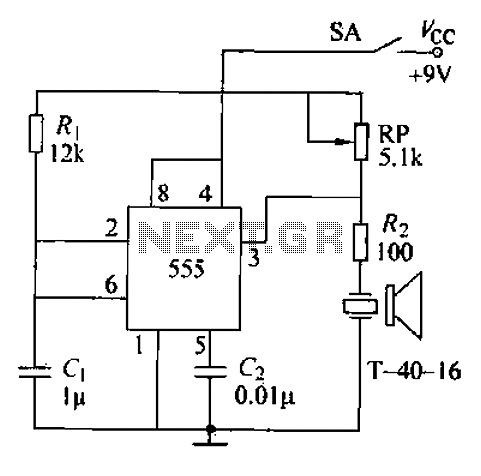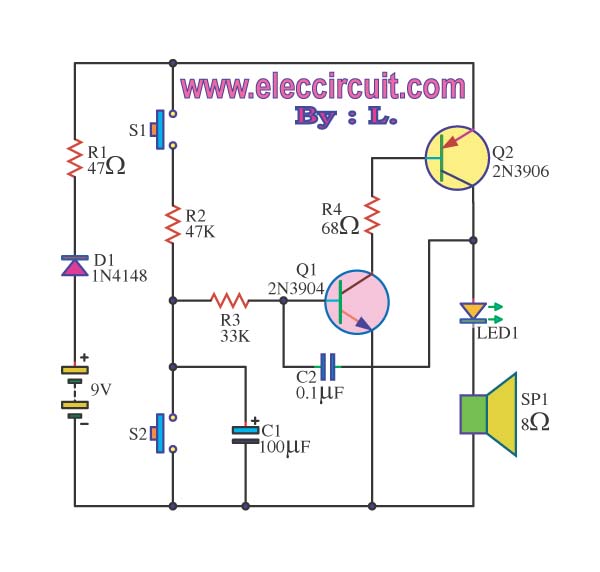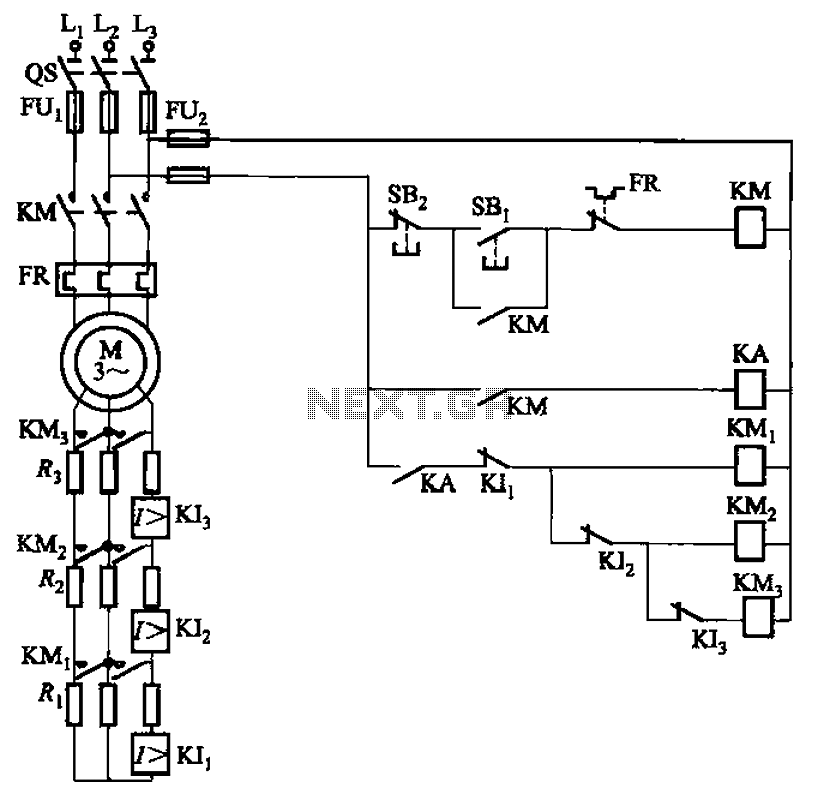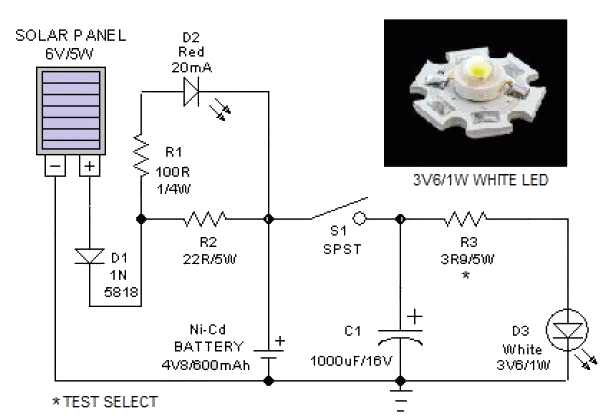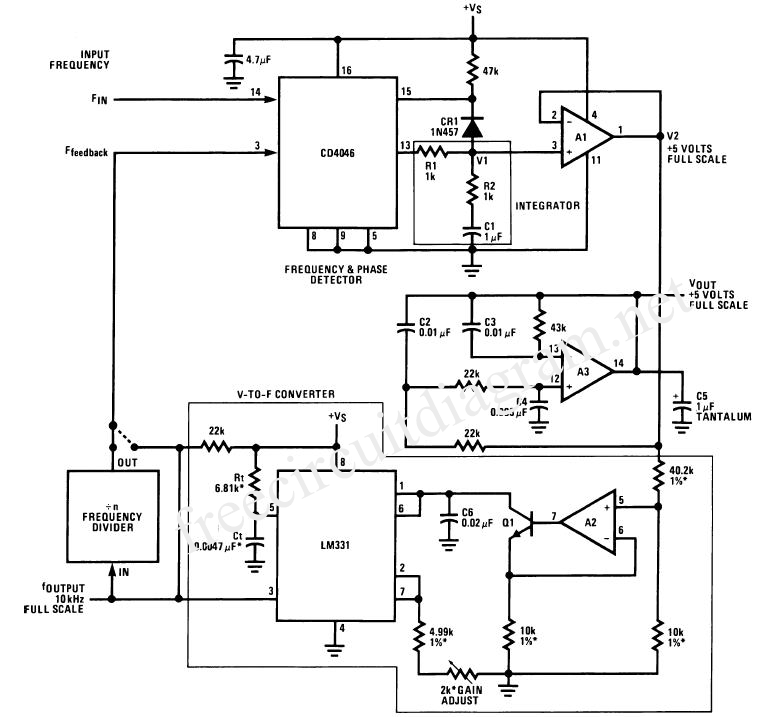
Digital Entry Lock Circuit
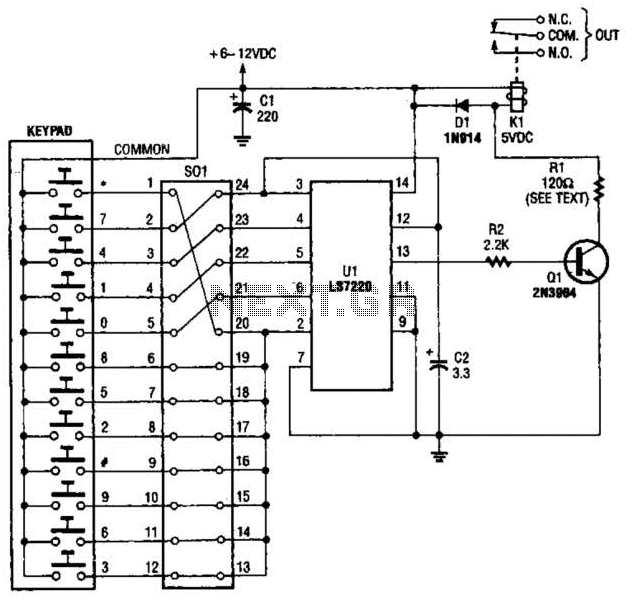
A block pinout diagram of the LS7220 keyless-lock IC is presented. The keypad must provide each key with a contact to a common connection. In this instance, the common connection is linked to the positive supply rail, allowing a positive voltage to be transmitted through to the wire associated with the pressed key. Each of the 12 keys is connected to separate wires, with each wire leading to a different pin of a 24-pin socket (SOI). To activate (unlock) the circuit, a preprogrammed four-digit access code must be entered in the correct sequence. The four-digit access code is programmed into the circuit by connecting jumpers between terminals of a 24-pin plug-in header. When the correct access code is entered in the proper sequence, positive voltages appear at pins 3, 4, 5, and 6 of U1. This causes IJ1 to output a positive voltage at pin 13, which is fed through resistor R2 to the base of Q1, resulting in its conduction. With Q1 conducting, its collector is pulled to ground potential, energizing relay K1. The normally open relay contacts close, activating any external device. Capacitor C2 regulates the total duration that the output of U1 at pin 13 remains positive after the first key is released. With a capacitance value of 3.3 µF for C2, the active time following the release of the first key is approximately two seconds with a 6-V supply or four seconds with a 12-V supply. Therefore, if subsequent keys are pressed too slowly, the relay may not close at all. To extend the time allowed for code entry, it is necessary to increase the capacitance of C2.
The LS7220 keyless-lock IC operates as a secure access control mechanism, utilizing a keypad interface for user interaction. The design features a 24-pin socket configuration, where each of the 12 keys from the keypad connects to dedicated pins on the IC, enabling precise detection of key presses. The common connection to the positive supply rail ensures that pressing any key sends a high voltage signal to its corresponding wire, facilitating the identification of the pressed key.
Programming the access code involves configuring jumpers on a 24-pin header, which allows for flexibility in setting unique codes based on user requirements. The sequence of the four-digit code is critical; the system is designed to recognize the specific order of key presses. Upon successful entry of the correct code, the IC activates an output signal at pin 13, which is crucial for controlling external devices through the relay mechanism.
The transistor Q1 acts as a switch that is controlled by the output from the IC. When the output at pin 13 goes high, current flows through resistor R2 into the base of Q1, turning it on. This action pulls the collector of Q1 to ground, allowing current to flow through relay K1, which then closes its normally open contacts. This operation can be utilized to control various devices such as electronic locks, alarms, or other automated systems.
Capacitor C2 plays a vital role in timing the output signal duration, ensuring that there is sufficient time for the user to enter the complete access code. The choice of capacitance directly influences the timing; hence, an increase in capacitance will proportionally extend the time window for key entry, thereby enhancing usability. This design consideration is critical in applications where user error in key entry sequence could lead to system failure. Overall, the LS7220 keyless-lock IC provides a robust solution for secure access control, combining user-friendly operation with reliable electronic performance. A block pinout diagram of the LS7220 keyless-lock IC is shown. The keypad must provide each key with a contact to a common connection. In this case, the common connection goes to the positive supply rail so that when a key is pressed, a positive voltage is passed through to the wire associated with that key. Each of the 12 keys are brought out to separate wires, and each wire is connected to a different pin of a 24-pin socket (SOI).
To activate (unlock) the circuit, a preprogrammed four-digit access code must be entered in the proper sequence. The four-digit access code must be entered in the proper sequence. The four-digit access is programmed into the circuit by connecting jumpers between terminals of a 24-pin plug-in header. When the correct access code is entered (in the proper sequence), positive voltages appear at pins 3, 4, 5, and 6 of Ul.
That causes IJ1 to output a positive voltage at pin 13, which is fed through resistor R2 to the base of Ql, causing it to conduct. With Ql conducting, its collector is pulled to ground potential, energizing relay Kl. The normally open relay contacts close, switching on any external device. Capacitor C2 controls the total time that the output of Ul at pin .13 is positive after the release of the first key.
With a value of 3.3 for C2, active time after release of the first key is about two seconds, assuming a 6-V supply or four seconds with a 12-V supply. Therefore, if you push the subsequent keys too slowly, the relay might not close at all! To increase the time allotted for code entry, you will have to increase the capacitance of C2.
The LS7220 keyless-lock IC operates as a secure access control mechanism, utilizing a keypad interface for user interaction. The design features a 24-pin socket configuration, where each of the 12 keys from the keypad connects to dedicated pins on the IC, enabling precise detection of key presses. The common connection to the positive supply rail ensures that pressing any key sends a high voltage signal to its corresponding wire, facilitating the identification of the pressed key.
Programming the access code involves configuring jumpers on a 24-pin header, which allows for flexibility in setting unique codes based on user requirements. The sequence of the four-digit code is critical; the system is designed to recognize the specific order of key presses. Upon successful entry of the correct code, the IC activates an output signal at pin 13, which is crucial for controlling external devices through the relay mechanism.
The transistor Q1 acts as a switch that is controlled by the output from the IC. When the output at pin 13 goes high, current flows through resistor R2 into the base of Q1, turning it on. This action pulls the collector of Q1 to ground, allowing current to flow through relay K1, which then closes its normally open contacts. This operation can be utilized to control various devices such as electronic locks, alarms, or other automated systems.
Capacitor C2 plays a vital role in timing the output signal duration, ensuring that there is sufficient time for the user to enter the complete access code. The choice of capacitance directly influences the timing; hence, an increase in capacitance will proportionally extend the time window for key entry, thereby enhancing usability. This design consideration is critical in applications where user error in key entry sequence could lead to system failure. Overall, the LS7220 keyless-lock IC provides a robust solution for secure access control, combining user-friendly operation with reliable electronic performance. A block pinout diagram of the LS7220 keyless-lock IC is shown. The keypad must provide each key with a contact to a common connection. In this case, the common connection goes to the positive supply rail so that when a key is pressed, a positive voltage is passed through to the wire associated with that key. Each of the 12 keys are brought out to separate wires, and each wire is connected to a different pin of a 24-pin socket (SOI).
To activate (unlock) the circuit, a preprogrammed four-digit access code must be entered in the proper sequence. The four-digit access code must be entered in the proper sequence. The four-digit access is programmed into the circuit by connecting jumpers between terminals of a 24-pin plug-in header. When the correct access code is entered (in the proper sequence), positive voltages appear at pins 3, 4, 5, and 6 of Ul.
That causes IJ1 to output a positive voltage at pin 13, which is fed through resistor R2 to the base of Ql, causing it to conduct. With Ql conducting, its collector is pulled to ground potential, energizing relay Kl. The normally open relay contacts close, switching on any external device. Capacitor C2 controls the total time that the output of Ul at pin .13 is positive after the release of the first key.
With a value of 3.3 for C2, active time after release of the first key is about two seconds, assuming a 6-V supply or four seconds with a 12-V supply. Therefore, if you push the subsequent keys too slowly, the relay might not close at all! To increase the time allotted for code entry, you will have to increase the capacitance of C2.
